
W
Wormhole-pris
$0,071930
-$0,00190
(−2,58 %)
Prisendring fra 00:00 UTC til nå

Ansvarsfraskrivelse
Det sosiale innholdet på denne siden («Innhold»), inkludert, men ikke begrenset til, tweets og statistikk levert av LunarCrush, er hentet fra tredjeparter og levert «som det er» kun for informasjonsformål. OKX garanterer ikke kvaliteten eller nøyaktigheten til innholdet, og innholdet representerer ikke synspunktene til OKX. Det er ikke ment å gi (i) investeringsråd eller anbefalinger, (ii) et tilbud eller oppfordring til å kjøpe, selge eller holde digitale ressurser, eller (iii) finansiell, regnskapsmessig, juridisk eller skattemessig rådgivning. Digitale ressurser, inkludert stablecoins og NFT-er, innebærer en høy grad av risiko, og kan variere mye. Prisen og ytelsen til den digitale ressursen er ikke garantert og kan endres uten varsel.
OKX gir ikke anbefalinger om investering eller aktiva. Du bør vurdere nøye om trading eller holding av digitale aktiva er egnet for deg i lys av din økonomiske situasjon. Rådfør deg med din juridiske / skatte- / investeringsprofesjonelle for spørsmål om dine spesifikke omstendigheter. For ytterligere detaljer, se våre vilkår for bruk og risikoadvarsel. Ved å bruke tredjepartsnettstedet («TPN») godtar du at all bruk av TPN vil være underlagt og styrt av vilkårene på TPN. Med mindre det er uttrykkelig angitt skriftlig, er OKX og dets partnere («OKX») ikke på noen måte knyttet til eieren eller operatøren av TPN. Du godtar at OKX ikke er ansvarlige for tap, skade eller andre konsekvenser som oppstår fra din bruk av TPN. Vær oppmerksom på at bruk av TNS kan føre til tap eller reduksjon av eiendelene dine. Produktet er kanskje ikke tilgjengelig i alle jurisdiksjoner.
OKX gir ikke anbefalinger om investering eller aktiva. Du bør vurdere nøye om trading eller holding av digitale aktiva er egnet for deg i lys av din økonomiske situasjon. Rådfør deg med din juridiske / skatte- / investeringsprofesjonelle for spørsmål om dine spesifikke omstendigheter. For ytterligere detaljer, se våre vilkår for bruk og risikoadvarsel. Ved å bruke tredjepartsnettstedet («TPN») godtar du at all bruk av TPN vil være underlagt og styrt av vilkårene på TPN. Med mindre det er uttrykkelig angitt skriftlig, er OKX og dets partnere («OKX») ikke på noen måte knyttet til eieren eller operatøren av TPN. Du godtar at OKX ikke er ansvarlige for tap, skade eller andre konsekvenser som oppstår fra din bruk av TPN. Vær oppmerksom på at bruk av TNS kan føre til tap eller reduksjon av eiendelene dine. Produktet er kanskje ikke tilgjengelig i alle jurisdiksjoner.
Wormhole markedsinformasjon
Markedsverdi
Markedsverdien beregnes ved å multiplisere det sirkulerende tilbudet av en mynt med den siste prisen.
Markedsverdi = Sirkulerende tilbud × Siste pris
Markedsverdi = Sirkulerende tilbud × Siste pris
Sirkulerende forsyning
Totalbeløpet for en mynt som er offentlig tilgjengelig på markedet.
Markedsverdirangering
En mynts rangering i form av markedsverdi.
Historisk toppnivå
Høyeste pris en mynt har nådd i sin handelshistorikk.
Historisk bunnivå
Laveste pris en mynt har nådd i sin handelshistorikk.
Markedsverdi
$334,62 mill.
Sirkulerende forsyning
4 652 683 072 W
46,52 % av
10 000 000 000 W
Markedsverdirangering
--
Revisjoner

Siste revisjon: 9. mars 2023, (UTC+8)
Høyeste pris siste 24 timer
$0,076180
Laveste pris siste 24 timer
$0,070210
Historisk toppnivå
$1,8200
−96,05 % (-$1,7481)
Sist oppdatert: 3. apr. 2024, (UTC+8)
Historisk bunnivå
$0,051100
+40,76 % (+$0,020830)
Sist oppdatert: 23. juni 2025, (UTC+8)
Hva føler du om W i dag?
Del følelsene dine her ved å gi en tommel opp hvis du føler deg optimistisk om mynten eller en tommel ned hvis du føler deg nedadgående.
Stem for å vise resultater
Wormhole-feed
Følgende innhold er hentet fra .

Yuki Rabbit🐰
Jeg har sett meme-konkurransen på BSC de siste dagene, og konkurransen mellom prosjektene har vært hardere enn jeg forventet
Det er ikke bare konkurransen om transaksjonsvolum, men også det faktum at du kan se hvem som virkelig er i en seriøs layout, rytme og fellesskap
Spesielt har flere nye prosjekter hastet hardt, og hele BSC-atmosfæren har blitt gjenopplivet
EGL1, Liberty og GRDM er de tre nye prosjektene som presterte mest
EGL1 løp rett til 4,29 milliarder dollar, noe som må sies å være litt eksplosivt
Men hvis du ser på temperaturen i samfunnet og rytmen i fortellingen, legger jeg mer vekt på Liberty
Faktisk fulgte jeg Liberty siden deres siste veldedighetsarrangement "familielege"
Så hvis du ser på stabilitet, fellesskapsatmosfære og langsiktig potensial, er jeg mer optimistisk på Liberty
Liberty har ikke en veldig aggressiv spillestil, men han er stødig med hvert skritt
Ikke lenge etter lanseringen har fellesskapet begynt å produsere innhold spontant, og diskusjonen fortsetter å stige
Visuelt uttrykk, innholdskreativitet, emnedrevet, hele teamets sans for rytme er veldig online
For tiden er Liberty godt på 2.-plass i det nye prosjektet, og handelsvolumet på 2,49 milliarder dollar øker også sakte gapet med GRDM
Det er verken et hardt rush av en trekkplate, eller en åpenbar feil – i det store og hele er det typen som kan fortsette å klatre
På den gamle prosjektsiden fortsetter TAG å lede an, og BULLA har nettopp gått forbi CA
Men du kan tydelig føle at dette spillet ikke lenger er det gamle prosjektet
Nytt blod er på vei oppover, og rytmen blir sakte omformet
Det er bare 2 dager igjen av nedtellingen, som stenger kl. 08:00 UTC 4.
Det totale handelsvolumet har nå nådd 26,8 milliarder dollar, og hvert påfølgende trinn kan avgjøre den endelige posisjonen
Jeg skal holde et øye med Liberty for å se om det kan få et comeback i sluttfasen for å overraske alle
#Liberty

BUILDon
NEDTELLING: 3 DAGER IGJEN
📊 Totalt volum: $ 26.80B
Nye meme-prosjekter
1️⃣ EGL1 (@EGLL_american) – $4.29 milliarder
2️⃣ Frihet (@liberty_bsc) – $2.49B
3️⃣ GRDM (@GridiumAI)– $2.29B
GRDM nærmer seg raskt Liberty 💥
W dobles nesten i volum over natten!
Vaktmester og ED holder stødig midtbane
🏛️ Eksisterende BSC-prosjekter
1️⃣ TAG (@TaggerAI)– $5.09B (fortsatt dominerende!)
2️⃣ BULLA (@BULLAMASCOT) - $ 2.89 milliarder ⬆️
3️⃣ CA (@Caila_AI) – $2.78B ⬇️
BULLA går forbi CA for 2.-plass 🔁
CARV nærmer seg milepælen på 1 milliard dollar
UPTOP, FAIR3, BANK alle på vei opp
⏳ Bare 3 dager igjen – 4. juli @ 08:00 UTC
#BuildWithUSD1 #USD1 #WLFI
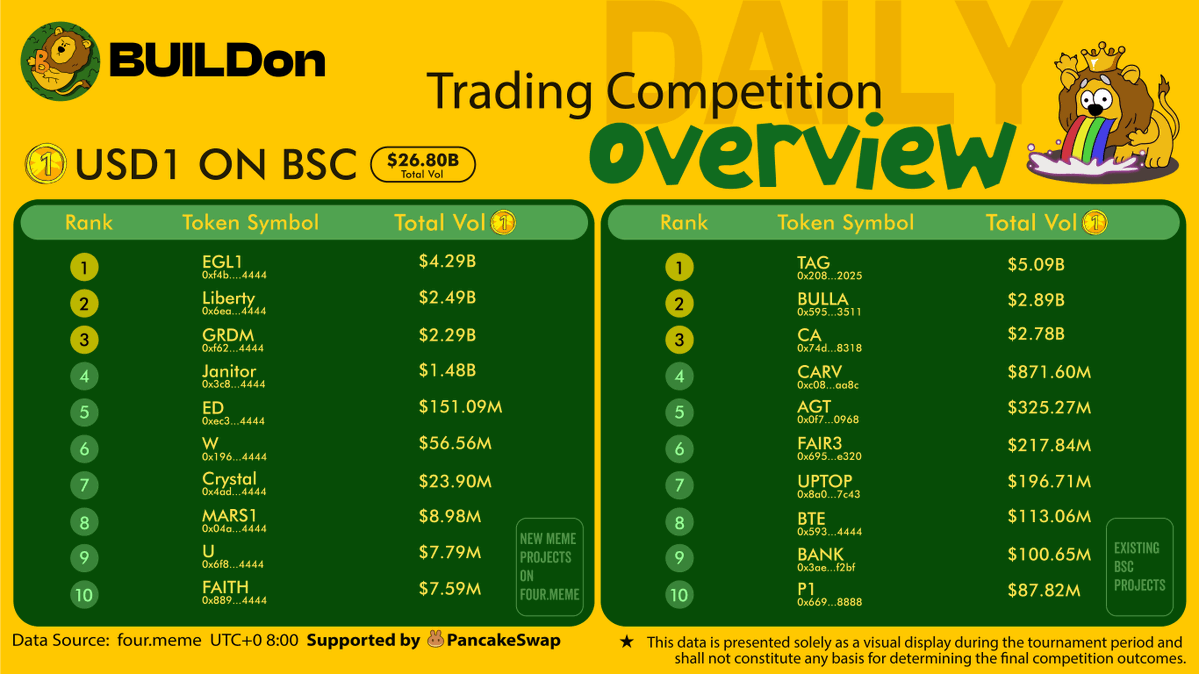
12,3k
63

小将
Jeg kom til Cannes i noen dager og hadde et møte, hvor jeg var Amway $W (ulvemynt).
WEB3 FØLES SOM OM DEN HAR GÅTT INN I DET «POSTMODERNISTISKE STADIET» – DE UNIVERSELLE VERDIENE «RASJONALITET», «FREMSKRITT» OG «SANNHET» SOM MODERNISMEN FREMMER BLIR STILT SPØRSMÅL VED OG TIL OG MED ANSETT SOM FIKTIVE.
Nå er markedet mer trygg på den narrative konstruksjonsevnen til prosjektpartiet/"landsbyboeren", og deres avstand fra maktens sentrum.
I Four Memes kvalifisering startet $W noen prosjekter nær Alpha Zone. Å kunne opprettholde handelsvolum er en manifestasjon av styrke. Etter sjokket kan det være gode handelsmuligheter.

W
🔥$W jaktmark er nå åpent!
📝 CA:0x19683a9d2a31508847a026dfe77f53a05a084444
Den første bølgen av jakten har begynt 🚀
Vil du løpe med ulvene - eller være det neste byttet i sikte deres?
🌐 Nettsted:
𝕏 :
Telegram:
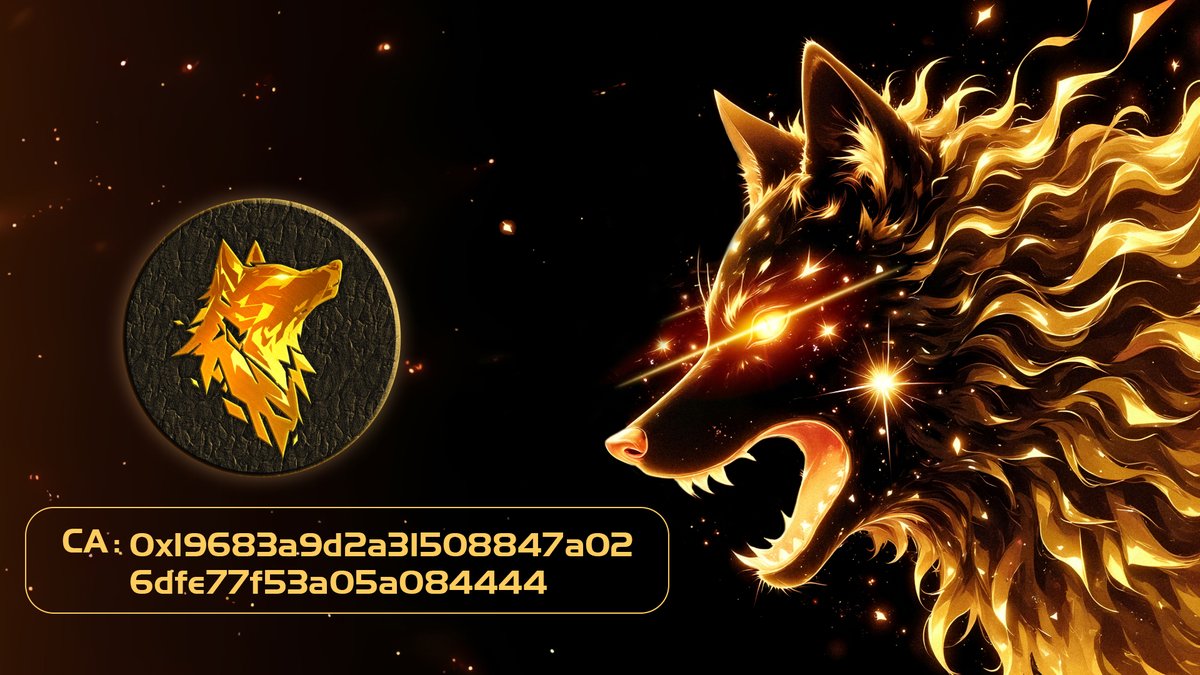
5,56k
3
Konverter USD til W


Wormhole prisutvikling i USD
Gjeldende pris på Wormhole er $0,071930. Siden 00:00 UTC, Wormhole har redusert ved −2,57 %. Den har for tiden en sirkulerende forsyning på 4 652 683 072 W og en maksimal forsyning på 10 000 000 000 W, noe som gir den en fullt utvannet markedsverdi på $334,62 mill.. For tiden har Wormhole-mynten 0. plass i markedsverdirangeringen. Wormhole/USD-prisen oppdateres i sanntid.
I dag
-$0,00190
−2,58 %
7 dager
+$0,0033000
+4,80 %
30 dager
-$0,01037
−12,61 %
3 måneder
-$0,01621
−18,40 %
Populære Wormhole konverteringer
Sist oppdatert: 04.07.2025, 06:50
| 1 W til USD | 0,071920 $ |
| 1 W til EUR | 0,061170 € |
| 1 W til PHP | 4,0539 ₱ |
| 1 W til IDR | 1 167,34 Rp |
| 1 W til GBP | 0,052668 £ |
| 1 W til CAD | 0,097688 $ |
| 1 W til AED | 0,26416 AED |
| 1 W til VND | 1 884,20 ₫ |
Om Wormhole (W)
Den oppgitte vurderingen er en samlet vurdering som OKX har samlet inn fra de oppgitte kildene, og er kun ment som informasjon. OKX garanterer ikke for kvaliteten eller nøyaktigheten av vurderingene. Denne aktiviteten er ikke ment å gi (i) investeringsråd eller en anbefaling, (ii) et tilbud eller oppfordring om å kjøpe, selge eller holde digitale ressurser, eller (iii) finansiell, regnskapsmessig, juridisk eller skattemessig rådgivning. Digitale ressurser, inkludert stablecoins og NFT-er, innebærer en høy grad av risiko, og verdien kan variere mye, og til og med verdiløs. Prisen og ytelsen til digitale ressurser er ikke garantert og kan endres uten varsel. De digital ressursene dine er ikke dekket av forsikring mot potensielle tap. Historisk avkastning er ikke en indikasjon på fremtidig avkastning. OKX garanterer ikke avkastning, tilbakebetaling av hovedstol eller renter. OKX gir ikke anbefalinger om investeringer eller aktiva. Du bør nøye overveie om trading eller holding digitale ressurser passer for deg i lys av din økonomiske situasjon. Rådfør deg med din advokat/skatte- eller investeringsekspert hvis du har spørsmål om dine spesifikke forhold.
Vis mer
- Offisiell nettside
- White Paper
- Github
- Blokkutforsker
Om tredjepartsnettsteder
Om tredjepartsnettsteder
Ved å bruke tredjepartsnettstedet ("TPW") godtar du at all bruk av TPW vil være underlagt og styrt av vilkårene i TPW. Med mindre det er uttrykkelig angitt skriftlig, er OKX og dets tilknyttede selskaper ("OKX") ikke på noen måte knyttet til eieren eller operatøren av TPW. Du godtar at OKX ikke er ansvarlig eller ansvarlig for tap, skade eller andre konsekvenser som oppstår fra din bruk av TPW. Vær oppmerksom på at bruk av en TPW kan føre til tap eller reduksjon av dine aktiva.
Wormhole Vanlige spørsmål
Hvor mye er 1 Wormhole verdt i dag?
For øyeblikket er en Wormhole verdt $0,071930. For svar og innsikt i prishandlingen til Wormhole, er du på rett sted. Utforsk de nyeste Wormhole diagrammene og trade ansvarlig med OKX.
Hva er kryptovaluta?
Kryptovalutaer, for eksempel Wormhole, er digitale eiendeler som opererer på en offentlig hovedbok kalt blokk-kjeder. Lær mer om mynter og tokens som tilbys på OKX og deres forskjellige attributter, som inkluderer live-priser og sanntidsdiagrammer.
Når ble kryptovaluta oppfunnet?
Takket være finanskrisen i 2008 økte interessen for desentralisert finans. Bitcoin tilbød en ny løsning ved å være en sikker digital ressurs på et desentralisert nettverk. Siden den gang har mange andre tokens som Wormhole blitt opprettet også.
Vil prisen på Wormhole gå opp i dag?
Ta en titt på vår Wormhole prisantydningsside for å forutsi fremtidige priser og bestemme prismålene dine.
ESG-erklæring
ESG-forskrifter (Environmental, Social, and Governance) for kryptoaktiva tar sikte på å adressere deres miljøpåvirkning (f.eks. energikrevende gruvedrift), fremme åpenhet og sikre etisk styringspraksis for å tilpasse kryptoindustrien med bredere bærekraft- og samfunnsmål. Disse forskriftene oppfordrer til overholdelse av standarder som reduserer risiko og fremmer tillit til digitale eiendeler.
Aktivadetaljer
Navn
OKCoin Europe Ltd
Relevant juridisk enhetsidentifikator
54930069NLWEIGLHXU42
Navn på kryptoaktiva
Wormhole Token
Konsensusmekanisme
Wormhole Token is present on the following networks: Arbitrum, Ethereum, Optimism, Solana.
Arbitrum is a Layer 2 solution on top of Ethereum that uses Optimistic Rollups to enhance scalability and reduce transaction costs. It assumes that transactions are valid by default and only verifies them if there's a challenge (optimistic): Core Components: • Sequencer: Orders transactions and creates batches for processing. • Bridge: Facilitates asset transfers between Arbitrum and Ethereum. • Fraud Proofs: Protect against invalid transactions through an interactive verification process. Verification Process: 1. Transaction Submission: Users submit transactions to the Arbitrum Sequencer, which orders and batches them. 2. State Commitment: These batches are submitted to Ethereum with a state commitment. 3. Challenge Period: Validators have a specific period to challenge the state if they suspect fraud. 4. Dispute Resolution: If a challenge occurs, the dispute is resolved through an iterative process to identify the fraudulent transaction. The final operation is executed on Ethereum to determine the correct state. 5. Rollback and Penalties: If fraud is proven, the state is rolled back, and the dishonest party is penalized. Security and Efficiency: The combination of the Sequencer, bridge, and interactive fraud proofs ensures that the system remains secure and efficient. By minimizing on-chain data and leveraging off-chain computations, Arbitrum can provide high throughput and low fees.
The crypto-asset's Proof-of-Stake (PoS) consensus mechanism, introduced with The Merge in 2022, replaces mining with validator staking. Validators must stake at least 32 ETH every block a validator is randomly chosen to propose the next block. Once proposed the other validators verify the blocks integrity. The network operates on a slot and epoch system, where a new block is proposed every 12 seconds, and finalization occurs after two epochs (~12.8 minutes) using Casper-FFG. The Beacon Chain coordinates validators, while the fork-choice rule (LMD-GHOST) ensures the chain follows the heaviest accumulated validator votes. Validators earn rewards for proposing and verifying blocks, but face slashing for malicious behavior or inactivity. PoS aims to improve energy efficiency, security, and scalability, with future upgrades like Proto-Danksharding enhancing transaction efficiency.
Optimism is a Layer 2 scaling solution for Ethereum that uses Optimistic Rollups to increase transaction throughput and reduce costs while inheriting the security of the Ethereum main chain. Core Components 1. Optimistic Rollups: Rollup Blocks: Transactions are batched into rollup blocks and processed off-chain. State Commitments: The state of these transactions is periodically committed to the Ethereum main chain. 2. Sequencers: Transaction Ordering: Sequencers are responsible for ordering transactions and creating batches. State Updates: Sequencers update the state of the rollup and submit these updates to the Ethereum main chain. Block Production: They construct and execute Layer 2 blocks, which are then posted to Ethereum. 3. Fraud Proofs: Assumption of Validity: Transactions are assumed to be valid by default. Challenge Period: A specific time window during which anyone can challenge a transaction by submitting a fraud proof. Dispute Resolution: If a transaction is challenged, an interactive verification game is played to determine its validity. If fraud is detected, the invalid state is rolled back, and the dishonest participant is penalized. Consensus Process 1. Transaction Submission: Users submit transactions to the sequencer, which orders them into batches. 2. Batch Processing: The sequencer processes these transactions off-chain, updating the Layer 2 state. 3. State Commitment: The updated state and the batch of transactions are periodically committed to the Ethereum main chain. This is done by posting the state root (a cryptographic hash representing the state) and transaction data as calldata on Ethereum. 4. Fraud Proofs and Challenges: Once a batch is posted, there is a challenge period during which anyone can submit a fraud proof if they believe a transaction is invalid. Interactive Verification: The dispute is resolved through an interactive verification game, which involves breaking down the transaction into smaller steps to identify the exact point of fraud. Rollbacks and Penalties: If fraud is proven, the batch is rolled back, and the dishonest actor loses their staked collateral as a penalty. 5. Finality: After the challenge period, if no fraud proof is submitted, the batch is considered final. This means the transactions are accepted as valid, and the state updates are permanent.
Solana uses a unique combination of Proof of History (PoH) and Proof of Stake (PoS) to achieve high throughput, low latency, and robust security. Here’s a detailed explanation of how these mechanisms work: Core Concepts 1. Proof of History (PoH): Time-Stamped Transactions: PoH is a cryptographic technique that timestamps transactions, creating a historical record that proves that an event has occurred at a specific moment in time. Verifiable Delay Function: PoH uses a Verifiable Delay Function (VDF) to generate a unique hash that includes the transaction and the time it was processed. This sequence of hashes provides a verifiable order of events, enabling the network to efficiently agree on the sequence of transactions. 2. Proof of Stake (PoS): Validator Selection: Validators are chosen to produce new blocks based on the number of SOL tokens they have staked. The more tokens staked, the higher the chance of being selected to validate transactions and produce new blocks. Delegation: Token holders can delegate their SOL tokens to validators, earning rewards proportional to their stake while enhancing the network's security. Consensus Process 1. Transaction Validation: Transactions are broadcast to the network and collected by validators. Each transaction is validated to ensure it meets the network’s criteria, such as having correct signatures and sufficient funds. 2. PoH Sequence Generation: A validator generates a sequence of hashes using PoH, each containing a timestamp and the previous hash. This process creates a historical record of transactions, establishing a cryptographic clock for the network. 3. Block Production: The network uses PoS to select a leader validator based on their stake. The leader is responsible for bundling the validated transactions into a block. The leader validator uses the PoH sequence to order transactions within the block, ensuring that all transactions are processed in the correct order. 4. Consensus and Finalization: Other validators verify the block produced by the leader validator. They check the correctness of the PoH sequence and validate the transactions within the block. Once the block is verified, it is added to the blockchain. Validators sign off on the block, and it is considered finalized. Security and Economic Incentives 1. Incentives for Validators: Block Rewards: Validators earn rewards for producing and validating blocks. These rewards are distributed in SOL tokens and are proportional to the validator’s stake and performance. Transaction Fees: Validators also earn transaction fees from the transactions included in the blocks they produce. These fees provide an additional incentive for validators to process transactions efficiently. 2. Security: Staking: Validators must stake SOL tokens to participate in the consensus process. This staking acts as collateral, incentivizing validators to act honestly. If a validator behaves maliciously or fails to perform, they risk losing their staked tokens. Delegated Staking: Token holders can delegate their SOL tokens to validators, enhancing network security and decentralization. Delegators share in the rewards and are incentivized to choose reliable validators. 3. Economic Penalties: Slashing: Validators can be penalized for malicious behavior, such as double-signing or producing invalid blocks. This penalty, known as slashing, results in the loss of a portion of the staked tokens, discouraging dishonest actions.
Insentivmekanismer og gjeldende gebyrer
Wormhole Token is present on the following networks: Arbitrum, Ethereum, Optimism, Solana.
Arbitrum One, a Layer 2 scaling solution for Ethereum, employs several incentive mechanisms to ensure the security and integrity of transactions on its network. The key mechanisms include: 1. Validators and Sequencers: o Sequencers are responsible for ordering transactions and creating batches that are processed off-chain. They play a critical role in maintaining the efficiency and throughput of the network. o Validators monitor the sequencers' actions and ensure that transactions are processed correctly. Validators verify the state transitions and ensure that no invalid transactions are included in the batches. 2. Fraud Proofs: o Assumption of Validity: Transactions processed off-chain are assumed to be valid. This allows for quick transaction finality and high throughput. o Challenge Period: There is a predefined period during which anyone can challenge the validity of a transaction by submitting a fraud proof. This mechanism acts as a deterrent against malicious behavior. o Dispute Resolution: If a challenge is raised, an interactive verification process is initiated to pinpoint the exact step where fraud occurred. If the challenge is valid, the fraudulent transaction is reverted, and the dishonest actor is penalized. 3. Economic Incentives: o Rewards for Honest Behavior: Participants in the network, such as validators and sequencers, are incentivized through rewards for performing their duties honestly and efficiently. These rewards come from transaction fees and potentially other protocol incentives. o Penalties for Malicious Behavior: Participants who engage in dishonest behavior or submit invalid transactions are penalized. This can include slashing of staked tokens or other forms of economic penalties, which serve to discourage malicious actions. Fees on the Arbitrum One Blockchain 1. Transaction Fees: o Layer 2 Fees: Users pay fees for transactions processed on the Layer 2 network. These fees are typically lower than Ethereum mainnet fees due to the reduced computational load on the main chain. o Arbitrum Transaction Fee: A fee is charged for each transaction processed by the sequencer. This fee covers the cost of processing the transaction and ensuring its inclusion in a batch. 2. L1 Data Fees: o Posting Batches to Ethereum: Periodically, the state updates from the Layer 2 transactions are posted to the Ethereum mainnet as calldata. This involves a fee, known as the L1 data fee, which accounts for the gas required to publish these state updates on Ethereum. o Cost Sharing: Because transactions are batched, the fixed costs of posting state updates to Ethereum are spread across multiple transactions, making it more cost-effective for users.
The crypto-asset's PoS system secures transactions through validator incentives and economic penalties. Validators stake at least 32 ETH and earn rewards for proposing blocks, attesting to valid ones, and participating in sync committees. Rewards are paid in newly issued ETH and transaction fees. Under EIP-1559, transaction fees consist of a base fee, which is burned to reduce supply, and an optional priority fee (tip) paid to validators. Validators face slashing if they act maliciously and incur penalties for inactivity. This system aims to increase security by aligning incentives while making the crypto-asset's fee structure more predictable and deflationary during high network activity.
Optimism, an Ethereum Layer 2 scaling solution, uses Optimistic Rollups to increase transaction throughput and reduce costs while maintaining security and decentralization. Here's an in-depth look at the incentive mechanisms and applicable fees within the Optimism protocol: Incentive Mechanisms 1. Sequencers: Transaction Ordering: Sequencers are responsible for ordering and batching transactions off-chain. They play a critical role in maintaining the efficiency and speed of the network. Economic Incentives: Sequencers earn transaction fees from users. These fees incentivize sequencers to process transactions quickly and accurately. 2. Validators and Fraud Proofs: Assumption of Validity: In Optimistic Rollups, transactions are assumed to be valid by default. This allows for quick transaction finality. Challenge Mechanism: Validators (or anyone) can challenge the validity of a transaction by submitting a fraud proof during a specified challenge period. This mechanism ensures that invalid transactions are detected and reverted. Challenge Rewards: Successful challengers are rewarded for identifying and proving fraudulent transactions. This incentivizes participants to actively monitor the network for invalid transactions, thereby enhancing security. 3. Economic Penalties: Fraud Proof Penalties: If a sequencer includes an invalid transaction and it is successfully challenged, they face economic penalties, such as losing a portion of their staked collateral. This discourages dishonest behavior. Inactivity and Misbehavior: Validators and sequencers are also incentivized to remain active and behave correctly, as inactivity or misbehavior can lead to penalties and loss of rewards. Fees Applicable on the Optimism Layer 2 Protocol 1. Transaction Fees: Layer 2 Transaction Fees: Users pay fees for transactions processed on the Layer 2 network. These fees are generally lower than Ethereum mainnet fees due to the reduced computational load on the main chain. Cost Efficiency: By batching multiple transactions into a single batch, Optimism reduces the overall cost per transaction, making it more economical for users. 2. L1 Data Fees: Posting Batches to Ethereum: Periodically, the state updates from Layer 2 transactions are posted to the Ethereum mainnet as calldata. This involves a fee known as the L1 data fee, which covers the gas cost of publishing these state updates on Ethereum. Cost Sharing: The fixed costs of posting state updates to Ethereum are spread across multiple transactions within a batch, reducing the cost burden on individual transactions. 3. Smart Contract Fees: Execution Costs: Fees for deploying and interacting with smart contracts on Optimism are based on the computational resources required. This ensures that users are charged proportionally for the resources they consume.
Solana uses a combination of Proof of History (PoH) and Proof of Stake (PoS) to secure its network and validate transactions. Here’s a detailed explanation of the incentive mechanisms and applicable fees: Incentive Mechanisms 4. Validators: Staking Rewards: Validators are chosen based on the number of SOL tokens they have staked. They earn rewards for producing and validating blocks, which are distributed in SOL. The more tokens staked, the higher the chances of being selected to validate transactions and produce new blocks. Transaction Fees: Validators earn a portion of the transaction fees paid by users for the transactions they include in the blocks. This provides an additional financial incentive for validators to process transactions efficiently and maintain the network's integrity. 5. Delegators: Delegated Staking: Token holders who do not wish to run a validator node can delegate their SOL tokens to a validator. In return, delegators share in the rewards earned by the validators. This encourages widespread participation in securing the network and ensures decentralization. 6. Economic Security: Slashing: Validators can be penalized for malicious behavior, such as producing invalid blocks or being frequently offline. This penalty, known as slashing, involves the loss of a portion of their staked tokens. Slashing deters dishonest actions and ensures that validators act in the best interest of the network. Opportunity Cost: By staking SOL tokens, validators and delegators lock up their tokens, which could otherwise be used or sold. This opportunity cost incentivizes participants to act honestly to earn rewards and avoid penalties. Fees Applicable on the Solana Blockchain 7. Transaction Fees: Low and Predictable Fees: Solana is designed to handle a high throughput of transactions, which helps keep fees low and predictable. The average transaction fee on Solana is significantly lower compared to other blockchains like Ethereum. Fee Structure: Fees are paid in SOL and are used to compensate validators for the resources they expend to process transactions. This includes computational power and network bandwidth. 8. Rent Fees: State Storage: Solana charges rent fees for storing data on the blockchain. These fees are designed to discourage inefficient use of state storage and encourage developers to clean up unused state. Rent fees help maintain the efficiency and performance of the network. 9. Smart Contract Fees: Execution Costs: Similar to transaction fees, fees for deploying and interacting with smart contracts on Solana are based on the computational resources required. This ensures that users are charged proportionally for the resources they consume.
Starten på perioden som erklæringen gjelder for
2024-07-02
Slutten på perioden som erklæringen gjelder for
2025-07-02
Energirapport
Energiforbruk
535.99704 (kWh/a)
Energiforbrukskilder og metodologier
The energy consumption of this asset is aggregated across multiple components:
To determine the energy consumption of a token, the energy consumption of the network(s) arbitrum, ethereum, optimism, solana is calculated first. For the energy consumption of the token, a fraction of the energy consumption of the network is attributed to the token, which is determined based on the activity of the crypto-asset within the network. When calculating the energy consumption, the Functionally Fungible Group Digital Token Identifier (FFG DTI) is used - if available - to determine all implementations of the asset in scope. The mappings are updated regularly, based on data of the Digital Token Identifier Foundation. The information regarding the hardware used and the number of participants in the network is based on assumptions that are verified with best effort using empirical data. In general, participants are assumed to be largely economically rational. As a precautionary principle, we make assumptions on the conservative side when in doubt, i.e. making higher estimates for the adverse impacts.
Konverter USD til W





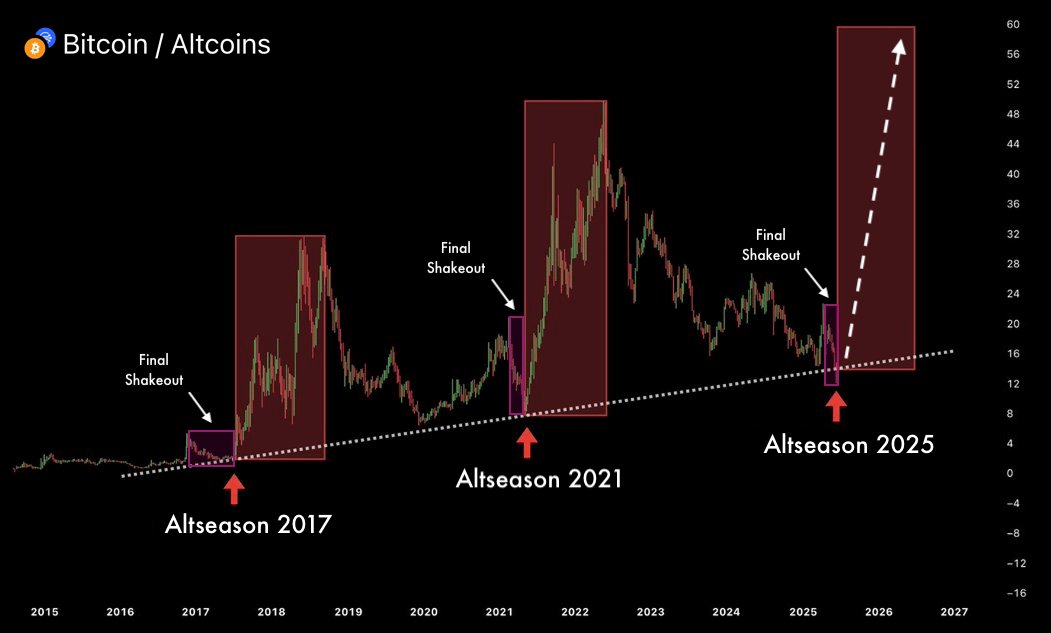

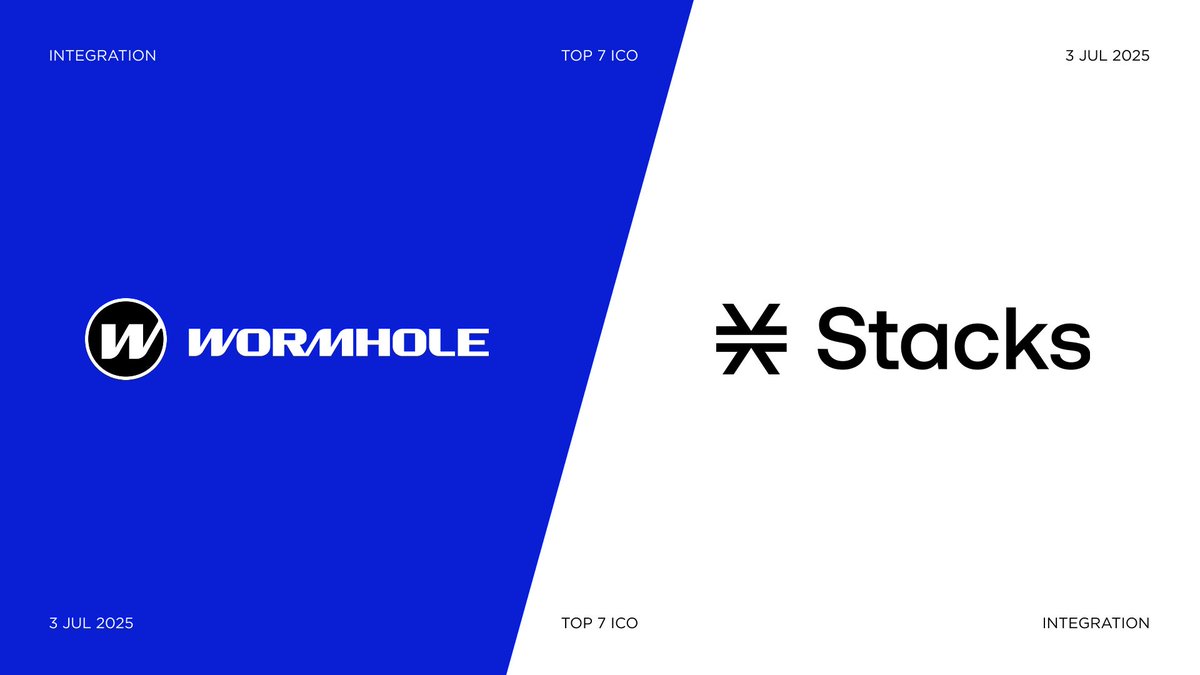











Sosialt